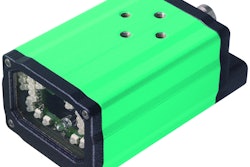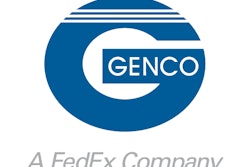In cases of delays due to documentation or sampling, cold chain infrastructure at airports can be extremely valuable to forwarders, manufacturers and ultimately, the customers receiving products.
Beyond shipment-related delays, pharma products can be held at airports due to missed flights, mechanical issues on planes, bad weather and backups at regulatory agencies. In some cases, planes may meet a given dry ice capacity, forcing some shipments to wait for another plane.
For temperature-sensitive medical products, a standard freezer or air conditioned building cannot guarantee the product will remain in temperature range. As Christelle Laot, Technical Fellow at FedEx Express, explained at PDA's 2016 Pharmaceutical Cold and Supply Chain Logistics Conference, the FedEx Express world hub in Memphis is the largest U.S. port of entry, receiving about 7% of total FDA import shipments in 2014.
In 2016, FedEx Express opened their cold chain center in Memphis, which has direct access to the airport tarmac and road, as well as a temperature-controlled area for palletizing, staging and handling. Products can be stored in one of three rooms (frozen, cold or CRT), which offer a total of 1000 square meters of thermally mapped and qualified temperature-controlled areas.
With the experience of developing such a robust facility, Laot offered some helpful tips for those looking to assess or improve their cold chain infrastructure:
-
Create a website to document cold chain assets in different locations. A website is more reliable than a spreadsheet that can be accessed by many, and carries the risk of deletion or unintended edits.
-
Check sites in person to confirm assets. A site’s capabilities may not match those documented.
-
Develop global standard operating procedures (SOPs) for common processes such as re-icing. Otherwise, sites may develop their own procedures, with varying degrees of accuracy.
-
Be aware of ventilation needs for any containers that include dry ice, to ensure CO2 levels stay in safe ranges.
-
Allow time for a defrosting step if you are drastically changing the temperature of a room. Thermal shock is real and can manifest in unintended facility consequences like cracked floors.
-
Ensure entries are forklift accessible.
-
Assess physical security risks and apply protective measures.
-
Use any existing data to develop volume forecasts.
-
Survey vendors for cold chain expertise and create well-defined selection criteria. Discuss procedures around warranty clauses: who to contact in case of emergency, parts replacement, etc. Laot urged companies to find errors and malfunctions while the facility is still under the contractor’s warranty.
-
Think of potential expansions. Consider leaving space to build bigger rooms in the future to meet growing capacities.
-
Leave more time than you think you need for room qualification, thermal mapping and potential geology surveys (for oil spills near infrastructure).
-
Verify that cold chain labels stand out on airport tarmacs. They must be visible during night operations, and distinctive from other labels to ensure products are quickly identifiable as cold chain shipments.
Laot noted that it can be difficult to justify the business case for building contingency infrastructure, as those who hold the purse strings want to keep products moving and may not understand the value of the investment, which remains an insurance policy. Express couriers face a unique situation regarding contingency planning, since they have no plan to stage shipments during transit, in contrast to freight forwarders. The strongest voice in this effort may belong to pharmaceutical manufacturers, who should raise concerns about ensuring product integrity and verifying contingency planning at critical points within the air network.
Once in place, Laot explained that there may be added value in programs that leverage the infrastructure, such as weekend programs that allow customers to take orders through end of business Friday and stage products over the weekend for Monday morning shipment.






















